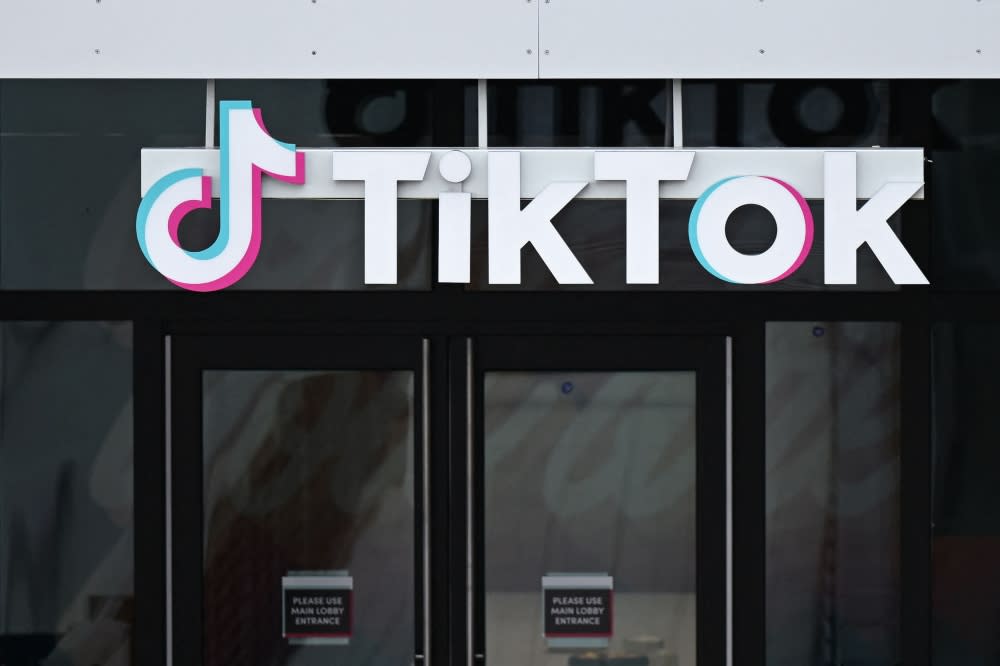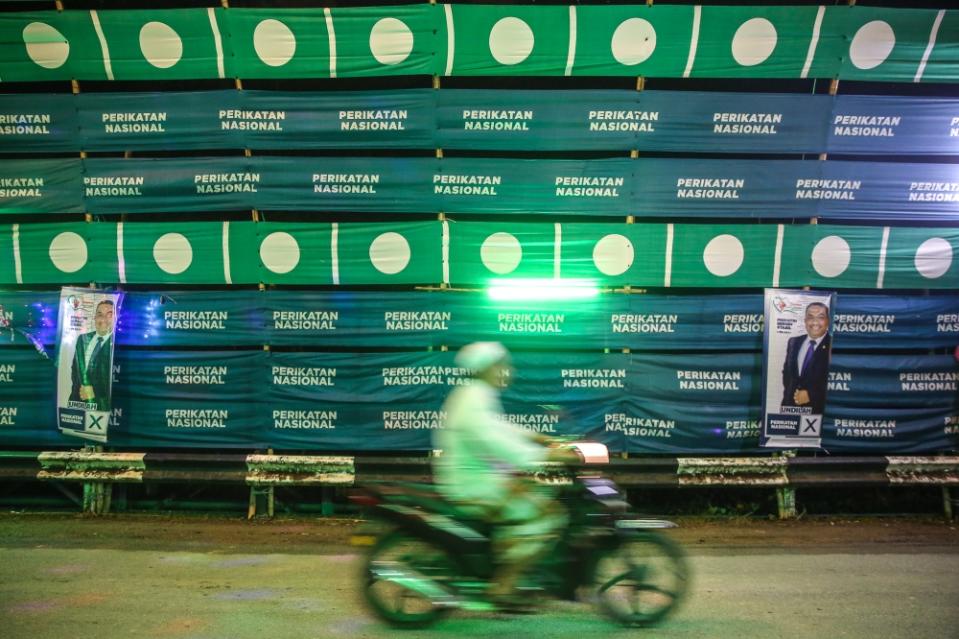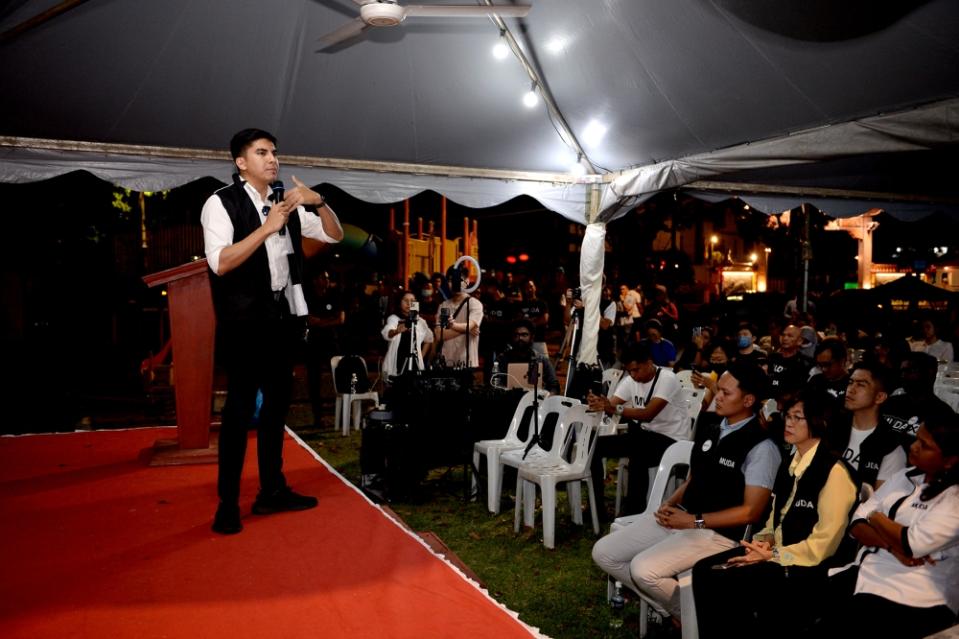TikTok emerges as current battleground for political engagement to woo young voters

KUALA LUMPUR, Aug 10 — Since the countdown to the state elections started, political parties in the country have turned to TikTok, the social media juggernaut, to capture the attention of young voters and fence-sitters.
The once predominantly youth-focused platform, known for its short-form videos and infectious challenges, has transformed into an unexpected political battleground, where parties and supporters vie for attention and influence in a matter of seconds.
The phenomenon was particularly evident during the last general election (GE15), commonly referred to as the "TikTok election", where political parties vied for attention and votes on this dynamic platform, said Universiti Teknologi Mara's Centre of Media and Information Warfare Studies political analyst Dr Noor Nirwandy Mat Noordin.
“TikTok has generated a surge of interest from the public, especially among new and young voters who seek to understand the political landscape through the lens of social media.
“This has not only made political content more accessible but has also helped parties forge deeper connections with younger demographics, especially with the ‘Undi18’ and it will continue to do so with the coming elections,” he said.

Perikatan Nasional and PAS flags are seen on the main road at Kampung Hujung Bandar in Sik, Kedah August 7, 2023. ― Picture by Yusof Mat Isa
How parties pitched their TikTok contents
Political parties and politicians displayed diverse narratives and employed a range of strategies to connect with voters on TikTok.
Malay Mail observed that the Islamist Party, PAS, under Perikatan Nasional (PN), is thriving on the TikTok platform while Pakatan Harapan (PH) and Barisan Nasional lagged behind on the platform even though both coalitions have now banded together to fight PN in the coming six-state elections.
Even after eight months following PAS's massive haul of 49 seats in the GE15, the TikTok landscape continues to be predominantly influenced by the PN-PAS coalition.
The main coalitions such as PAS, Umno, and PKR through their Youth wing have their own TikTok accounts, but the PAS youth account is more organised and has the most followers which is 146.8k at the time of writing.
Noor believes that due to social media algorithms, the use of 3R issues, particularly religion, allowed PAS to gain better traction among some segments of voters, particularly among Malays.
He said this is because the Malay population makes up the majority of the voting population and thus offers a wider base to reach out to.
“It was not unusual for PAS' videos, which were laced with religious elements and issues, to enter the algorithm of Malay viewers, as some of them would already be watching religious-based content on the platform,” he said.
Whereas Umno and PKR coalitions under PH have 7651 and 1803 followers respectively.
The reason behind the lack of followers is due to PH youth leaders are heavily occupied managing their individual campaigns, with each of them having their own TikTok accounts for their particular constituency.
Hence, they did not allocate sufficient attention to crafting a unified media strategy and consistent messaging.
However, Jason Yew stands out as one of the most renowned TikTok creators within the PH coalition where his approach predominantly involved curating excerpts from existing videos, sourced from platforms like the party's YouTube channel or live broadcasts of political rallies on Facebook featuring prominent speakers such as PKR president Datuk Seri Anwar Ibrahim and its deputy president Rafizi Ramli.
These selected snippets' inclusion of subtitles proved particularly valuable for viewers who engaged with the content during their commutes or before sleep and this formula has yielded millions of views and likes during the state elections campaigning period which is from July 29 to August 11.
However, in comparison to PH and BN, PN seemed to have garnered more endorsements from social media influencers who were not typically associated with political content creation.
These endorsers openly expressed their support for PN and encouraged their followers to vote for the party during the campaign period.
On the other hand, the Malaysian United Democratic Alliance party (Muda) has also been actively posting TikTok content by using the platform as a medium to broadcast their missions and visions to reach a wider audience.
Muda has a large base of followers who are from the age of 18 to 29, with 15.8k followers on Tik Tok and their content is usually fast-paced and has an emotion-provoking effect to attract young voters as the content they posts are mainly press conferences from the party’s president Syed Saddiq Syed Abdul Rahman and about current issues voicing out by the party's candidates.

Muda president Syed Saddiq Syed Abdul Rahman speaks during a ceramah at Pantai Jerejak in Penang August 8, 2023. ― Picture by KE Ooi
The importance of TikTok for political gains
The viral nature of TikTok content allows parties to exponentially increase their reach and the cleverly designed hashtags and challenges can lead to a snowball effect, creating a domino effect of user-generated content that champions a party's cause.
Noor said that when users interact with content related to certain issues or parties, TikTok's algorithm automatically tailors the content to their preferences.
“This personalised algorithmic approach effectively creates a ‘bubble’ of information that aligns with users' preferences, leading them to engage more deeply with content that resonates with them.
“Besides, engaging hashtags and challenges centered around specific policy topics or candidates can also make the contents go viral,” he said.
He also revealed how political parties can strategically use TikTok's algorithms to their advantage.
He cites an example of the Islamic party PAS, whose campaign aligned with the algorithmic preferences of users interested in religious issues and Islamic values.
"This inadvertently gave PAS an edge in terms of automated algorithmic resonance and visibility, making its campaign content more likely to be viewed by targeted users,” he said.
However, he also warned of the potential limitations of TikTok as a political engagement platform.
“TikTok’s centralised algorithms may inadvertently overshadow localised issues in favour of federal level concerns. To truly capture the socio-economic and state-specific dynamics, political parties must tailor their content to both resonate with TikTok's algorithm and address local concerns,” he added.
He also urged that political parties and campaigners need to understand TikTok's algorithmic intricacies and audience preferences to make their content more appealing and effective with state elections approaching.



